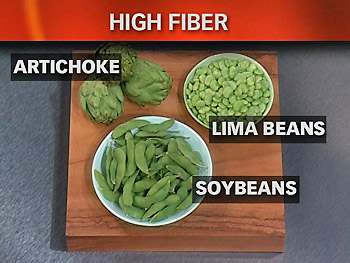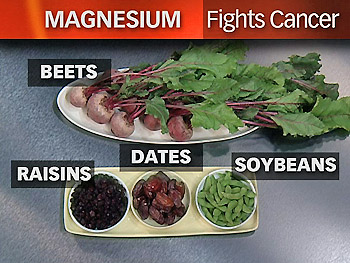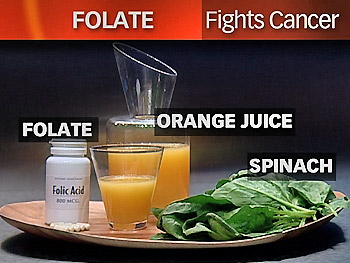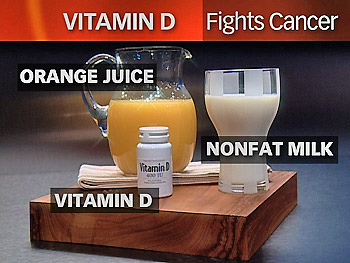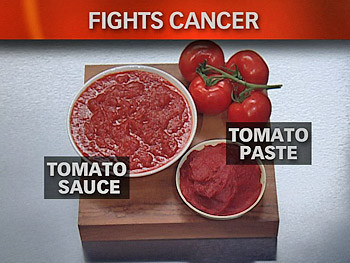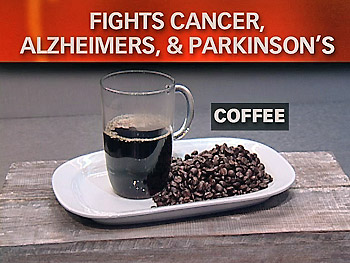The 10 Best Foods for a Flat Belly
| |  |
| Thursday, 18 May 2006 | |
|
Now, June's Fitness magazine gives the low-down on the best foods we can eat to help us take the high road to leaner and flatter abs. And the advice couldn't have come at a better time: at the start of swimsuit season. Of course, we must still exercise to tone up our bellies. Yet, we can help our efforts by eating the right kinds of foods that provide all the nutrients we need. • Almonds. They contain protein, fiber, energy-creating magnesium, and vitamin E, a powerful disease-fighting antioxidant. The magnesium also helps regulate the levels of sugar in our blood, which will ward off cravings for food. And many of us know what food cravings lead to. Meyer recommends 23 almonds a day, or about an ounce. That translates to 160 calories. • Eggs. The best protein source of 'em all. They provide essential "amino acids," proteins used by our bodies to create muscle fibers, brain chemicals and a bunch of other healthy material. Meyer recommends an egg a day. Folks who have high levels of cholesterol in their blood should first check with their doctors. An egg contains about 213 milligrams of cholesterol. Some nutritionists favor Eggbeaters, the egg product made out of the egg whites, not the yolks, therefore skipping cholesterol and fat. • Apples. Overweight women who added to their diets three apples or pears a day for three months shed more pounds than women who had the same diets but ate oat cookies rather than fruits, according to a study in Nutrition. Meyer suggests an apple or two a day, especially Red Delicious, Cortland and Northern Spy varieties with the highest antioxidant activity. • Soy. Meyer recommends roasted soybeans for snacks, shelled edamame in soups, and mixing tofu into a "smoothie." • Berries. Loaded with fiber. Health experts recommend between 25 and 35 grams of fiber a day, which allows our bodies to absorb fewer calories from other foods. Meyer recommends at least a half cup daily, which is 30 calories, of raspberries, blueberries, strawberries, boysenberries, gooseberries and black currants. • Leafy green vegetables. Meyer's kudos go to spinach, broccoli, arugula and broccoli. • Yogurt. People who get calcium from yogurt rather than other dairy sources or supplements may lose more weight in the belly, suggests a recent study in the International Journal of Obesity. Healthy bacteria in most yogurts help keep our digestive systems in working shape. Meyer suggests one to three cups a day of low-fat or fat-free yogurt, especially unsweetened yogurt with live active cultures and splashed with chopped fruit. • Vegetable soup. People who eat broth-based or low-fat, cream-based soups twice daily lose weight more easily than people who consume the same amount of calories in snacks. Soup fans also maintain a total weight loss of 16 pounds after one year, according to a study at Penn State University. Meyer recommends at least one cup of low-calorie, low-sodium vegetable soup every day. • Seafood, especially "fatty fish" like salmon, tuna and mackerel, which are packed with omega-3 fatty acids that may help promote the burning of fat. An Australian study suggested that people who ate fish daily improved their glucose-insulin response, which helps folks avoid cravings. Meyer's tip is for two four-ounce servings a week. • Quinoa. A whole grain that contains five grams of fiber and 11 grams of protein per half cup. Pronounce it KEEN-wah. It has a nutty flavor and "crunchy-yet-chewy" texture, said Meyer, who recommends at least one-half cup serving. To find more than 6,000 ideas for healthy meals in which you can incorporate these foods for you and your family, visit the Nubella recipe repository. Don't forget to check out the popular Healthy Cooking recipes in the Healthy Eating center. Source: Fitness magazine Posted by: Steve Smith Nubella News encourages all site visitors and readers interested in understanding the material contained within this article at a more detailed level, to perform additional research and investigation into the article topics, references, and any links provided within the material. Nubella News does not intend to offer medical advice. We recommend that all readers ask their doctor or medical professional for additional advice, guidance, and/or recommendations pertaining to this article. | |
| Last Updated ( Thursday, 18 May 2006 ) |
 We still can strive to tone up our bodies with flat bellies, just maybe not the "six-pack abs" on those late-night TV commercials for tummy toners or on our favorite movie stars. Let's face it: flat tummies are more the norm than the six packs - and they're more attainable.
We still can strive to tone up our bodies with flat bellies, just maybe not the "six-pack abs" on those late-night TV commercials for tummy toners or on our favorite movie stars. Let's face it: flat tummies are more the norm than the six packs - and they're more attainable.